Are there any disadvantages to using eco-friendly balloons?
Are you wondering if eco-friendly balloons1 are truly a guilt-free choice for your celebrations? It's a valid question. The truth is, while they offer many benefits, there can be some trade-offs to consider.
Eco-friendly balloons are often perceived as a perfect solution. However, they may present challenges such as higher costs, potentially reduced durability compared to traditional latex, and variations in performance under diverse environmental conditions. Understanding these aspects helps in making informed choices for sustainable celebrations2.
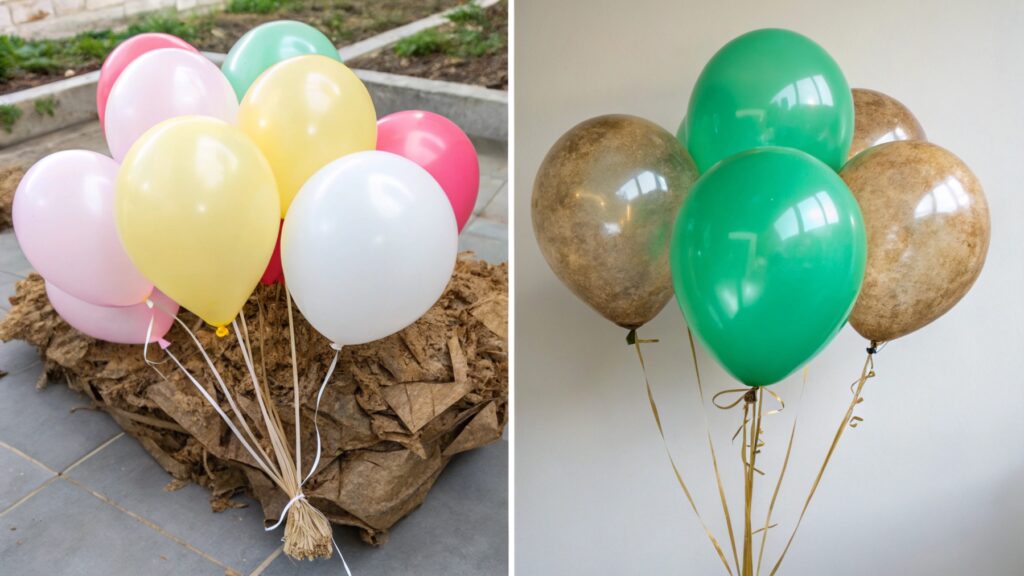
When I first heard about eco-friendly balloons3, I was excited. I thought, "Finally, a way to make moments colorful without a hidden cost to our planet!" But, as with many new innovations, the reality is a bit more nuanced.
What are the common misconceptions about eco-friendly balloons?
Do you believe eco-friendly balloons are always 100% biodegradable? Many people do. It is a common misunderstanding that can lead to false expectations.
The biggest misconception is that all "eco-friendly" balloons instantly vanish without a trace. While many are made from natural latex4, which is biodegradable5, their degradation rate depends heavily on environmental conditions. Other "eco-friendly" options, like those made from plant-based plastics, can still require specific industrial composting facilities to break down properly.
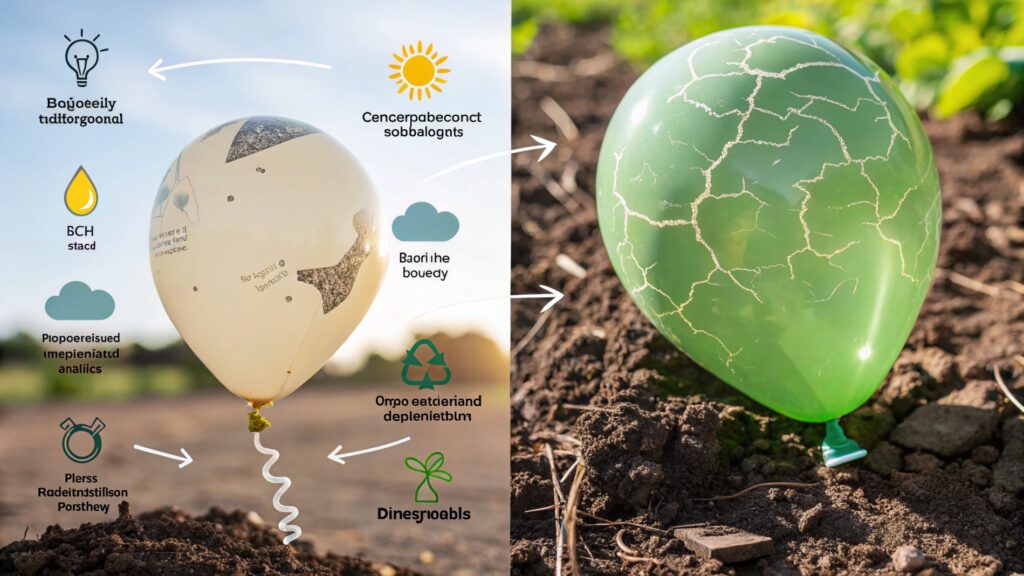
When I talk with our partners, I often hear surprise when I explain the full picture. It is not as simple as throwing a balloon in the garden and watching it disappear. From my experience in the industry, understanding the nuances of biodegradability is key.
Understanding Biodegradability Claims: A Deeper Look
Many consumers believe that "eco-friendly" means a product will disappear quickly and completely in any natural environment. This is not always true for balloons. The term "biodegradable" refers to a material that can break down into natural components over time. The speed and completeness of this breakdown depend on several factors.
For instance, natural latex balloons are indeed biodegradable. They are made from rubber trees. However, their decomposition time varies. It can take anywhere from a few months to several years, depending on exposure to sunlight, moisture, and microbial activity. My team at AIHUA BALLOON works to ensure our natural latex balloons meet these standards.
Another common misconception is about "plant-based" or "compostable" balloons. These are often made from PLA (polylactic acid), derived from renewable resources like corn starch. While these materials are designed to break down, they often require specific conditions found in industrial composting facilities. They will not necessarily decompose in a backyard compost pile or in a landfill as quickly. This distinction is crucial for procurement managers like Sarah, who need to ensure compliance and accurate consumer information.
| Material Type | Source | Biodegradation Conditions | Typical Breakdown Time (Approx.) |
|---|---|---|---|
| Natural Latex | Rubber Trees | Natural environment (sunlight, water) | 6 months - 2 years (variable) |
| PLA (Plant-based) | Corn Starch, Sugarcane | Industrial composting facilities | 3 - 6 months (in ideal conditions) |
| Traditional Plastic | Petroleum | Extremely long, often never | Hundreds of years |
My experience has shown me that educating customers about these differences is vital. We want to make sure they understand what they are buying. It helps set proper expectations and avoids further environmental issues.
Do eco-friendly balloons offer the same durability as traditional balloons?
Are you concerned about balloons popping too easily at your next event? Durability is a big question for eco-friendly options. It is a valid concern for anyone planning a celebration.
Eco-friendly balloons, especially those made from natural latex, are generally durable enough for typical use. However, some synthetic "eco-friendly" alternatives might have different structural integrity. They may not hold air or helium as long as traditional foil balloons. This difference requires careful consideration for event planning.
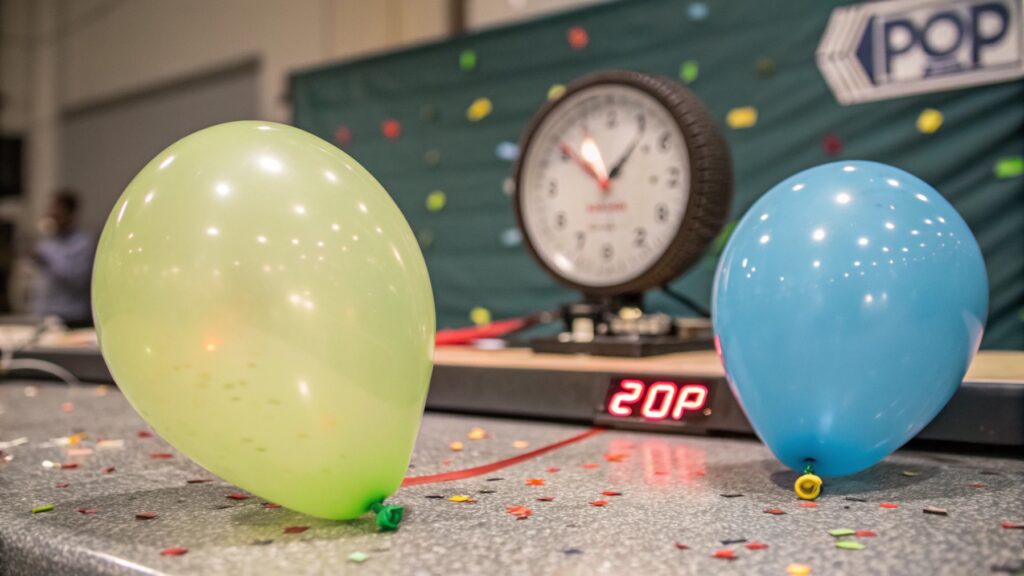
When we develop new products at AIHUA BALLOON, durability is always a top priority. We know that nobody wants their decorations to deflate halfway through a party. I have seen firsthand how much a burst balloon can dampen the mood.
Performance and Durability of Eco-Friendly Balloons
The performance of eco-friendly balloons, especially concerning durability6, is a frequent topic in our discussions with retailers. Natural latex balloons, which form the core of our eco-friendly offerings, are surprisingly robust. They are designed to withstand inflation and remain buoyant for a reasonable duration. Our balloons, for example, undergo strict quality checks to ensure they meet performance expectations. We focus on producing high-quality balloons that hold air and helium effectively.
However, a procurement manager like Sarah might observe slight differences compared to traditional, less eco-friendly options. For instance, some alternative "plant-based" balloons might be more sensitive to extreme temperatures or rough handling. They might not have the same stretch capacity or resistance to punctures as conventional plastic balloons. This is a point we always highlight. We want our partners to be fully aware. It ensures they choose the right product for their specific needs.
Our goal is to balance environmental responsibility with product quality. We work to innovate and improve the durability of our eco-friendly lines constantly. It is an ongoing process. We want to ensure that "eco-friendly" does not mean "less reliable."
Are there significant cost differences7 when choosing eco-friendly balloon options?
Are you worried that going green will break your budget? The price of eco-friendly balloons is often a major deciding factor. It is important to know if you will pay more.
Yes, there can be significant cost differences. Eco-friendly balloons, due to specialized materials and production processes, often have a higher unit cost than traditional latex or foil balloons. This price premium is a key disadvantage for budget-conscious consumers and businesses.
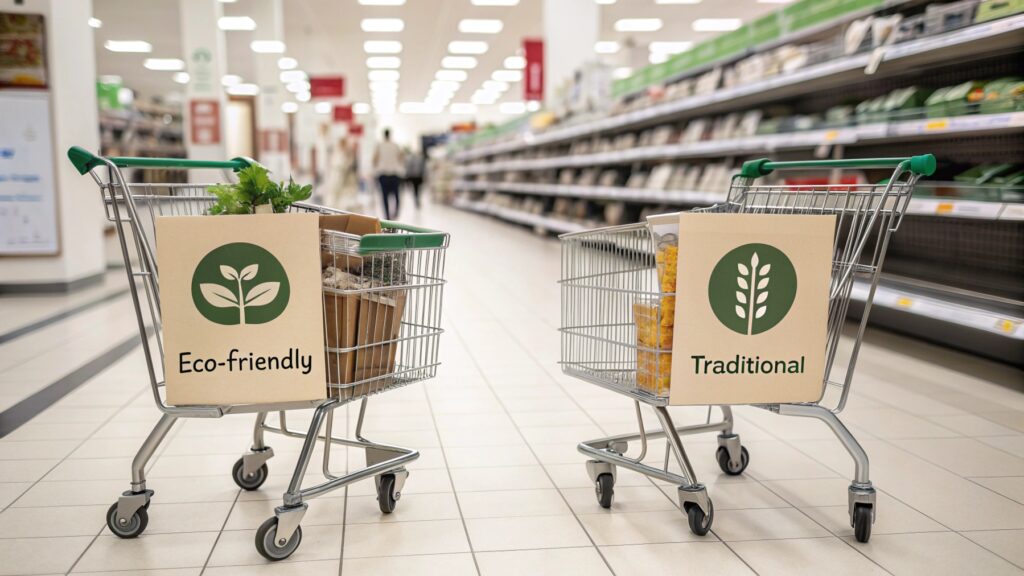
This is where my perspective as a Vice General Manager comes in. I see the production costs firsthand. We strive to make our products as affordable as possible. But there are real factors that drive up the price of eco-friendly options.
The Cost Equation of Sustainable Balloon Production
When it comes to the cost of eco-friendly balloons, the simple answer is that they often are more expensive. This is a critical point for procurement managers like Sarah Chen. The reason for the higher cost lies in several factors related to materials and production.
First, the raw materials for genuinely eco-friendly balloons, such as sustainably sourced natural latex8 or specialized plant-based polymers, can be more expensive than conventional petroleum-based plastics. These materials might require specific cultivation, harvesting, or processing methods that add to the cost. We invest in ethical sourcing. This ensures our materials meet environmental and social standards.
Second, the manufacturing processes for eco-friendly balloons can be more complex or require specialized machinery. For example, ensuring consistent quality and biodegradability requires precise controls and often smaller batch production. My team at AIHUA BALLOON focuses on efficiency. But these steps inherently add to the overall expenditure.
Lastly, research and development costs play a role. Companies like ours invest heavily in innovation. We want to create truly sustainable products that meet both safety and environmental standards. These R&D efforts are passed on, in part, to the consumer.
| Cost Factor | Impact on Price | Explanation |
|---|---|---|
| Raw Material Sourcing | Higher | Sustainable/ethical sourcing, specialized biodegradable materials9 |
| Manufacturing Process | Higher | Specialized equipment, precise controls for biodegradability, smaller batches |
| Research & Development | Higher | Investment in innovation, testing, and compliance with eco-standards |
| Certifications | Higher | Obtaining and maintaining environmental certifications (e.g., composting labels) |
While we work to optimize our production to minimize costs, these inherent factors mean that consumers and businesses should expect to pay a premium for truly eco-friendly balloon options. It is a trade-off for reducing environmental impact.
How do eco-friendly balloons perform in various environmental conditions compared to their counterparts?
Are you wondering how eco-friendly balloons hold up outside in the rain or intense sun? Their performance in different weather conditions is a key consideration. It affects how long your decorations last.
Eco-friendly balloons, particularly those made from natural latex, perform well in most typical conditions. However, extreme temperatures, prolonged exposure to direct sunlight, or high humidity can accelerate their degradation process. They may also lose their buoyancy faster than traditional foil balloons in similar challenging conditions.
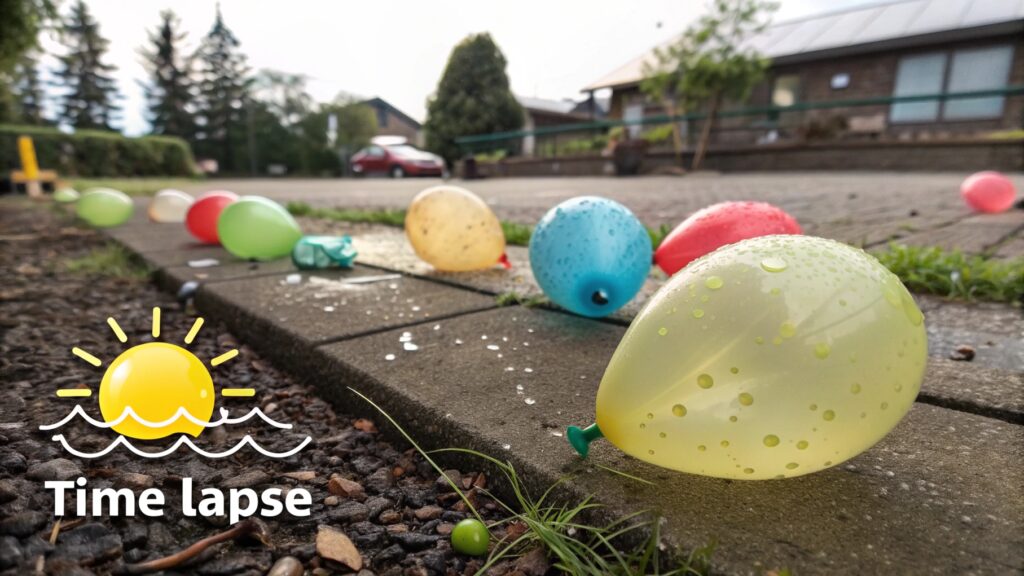
At AIHUA BALLOON, we test our products rigorously. We want to ensure they perform well. My team understands that balloons are often used outdoors. We know they need to withstand various elements.
Environmental Impact on Eco-Friendly Balloon Performance
The performance of eco-friendly balloons, particularly natural latex ones, can be influenced significantly by environmental conditions. This is a topic we discuss extensively with our production and R&D teams. Our goal is to provide balloons that are both sustainable and reliable.
Consider a hot, sunny day. The UV radiation from direct sunlight, along with elevated temperatures, can accelerate the oxidation process in natural latex. This can cause the balloons to lose their elasticity faster. They might also break down more quickly than desired. For a procurement manager like Sarah, this means considering the end-use environment. A balloon display for an indoor mall will face different challenges than one for an outdoor summer festival.
Similarly, high humidity can affect performance. While moisture helps in the biodegradation process, too much of it can sometimes make balloons feel sticky or reduce their float time. Conversely, very dry conditions can make latex brittle. This makes them more prone to popping. Traditional plastic or foil balloons generally show more resilience to these extreme conditions. They are not designed to break down.
| Environmental Factor | Impact on Natural Latex Balloons | Comparison to Traditional Balloons |
|---|---|---|
| High Heat | Accelerated degradation, reduced float time | Generally more resistant |
| Direct Sunlight (UV) | Accelerated breakdown, color fading | Generally more resistant |
| High Humidity | Can feel sticky, reduced float time | Less affected |
| Extreme Cold | Can become brittle, reduced elasticity | Can also be affected, but differently |
We always advise our customers to store and use our balloons under optimal conditions. This extends their life and ensures they perform as expected. It helps in making moments colorful for longer.
Conclusion
Eco-friendly balloons offer sustainability benefits but have disadvantages like higher costs, variable durability, and sensitivity to environmental conditions. They are a good choice but require careful consideration of these factors to meet expectations.
-
Explore this link to understand the pros and cons of eco-friendly balloons, helping you make informed choices for your celebrations. ↩
-
This resource will provide you with tips and ideas for planning celebrations that are both enjoyable and environmentally friendly. ↩
-
Explore this link to understand the true environmental impact of eco-friendly balloons and debunk common myths surrounding them. ↩
-
Learn more about natural latex, its benefits, and its role in sustainable products by visiting this informative link. ↩
-
This resource will clarify the complexities of biodegradability and help you make informed choices about eco-friendly products. ↩
-
Explore this resource to learn how to enhance the durability of eco-friendly balloons, ensuring they last throughout your events. ↩
-
Understanding the cost factors can help you budget effectively while choosing sustainable options for your celebrations. ↩
-
Learn about sustainably sourced natural latex and its positive impact on the environment and product quality. ↩
-
Discover the science behind biodegradable materials and their role in reducing environmental impact. ↩
